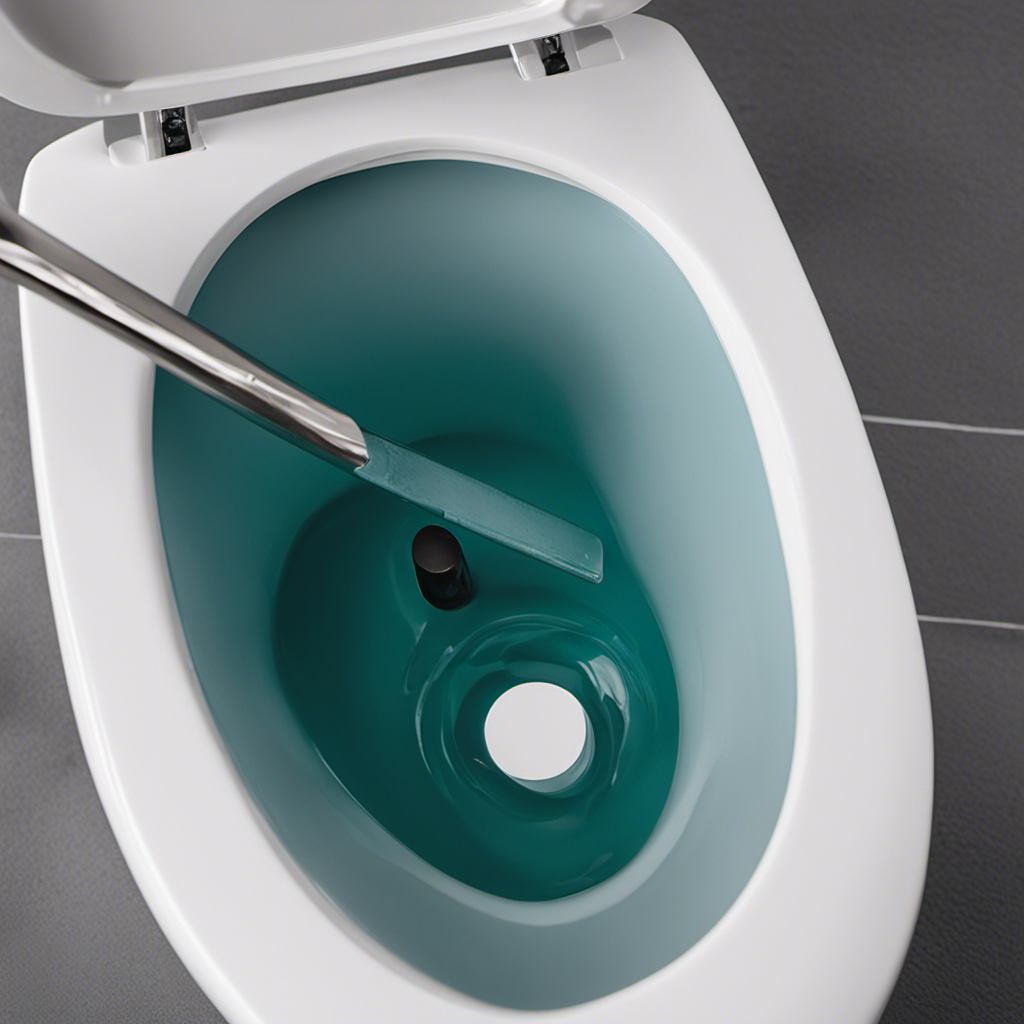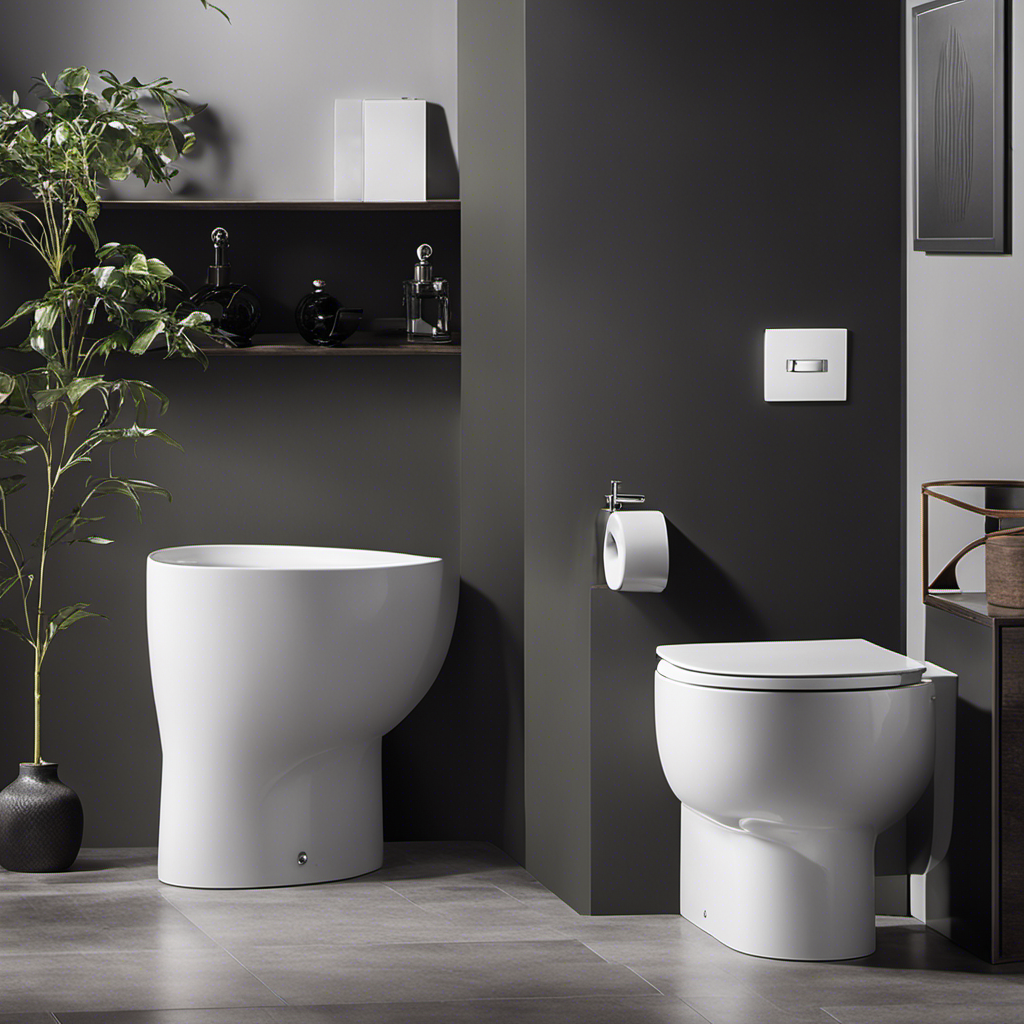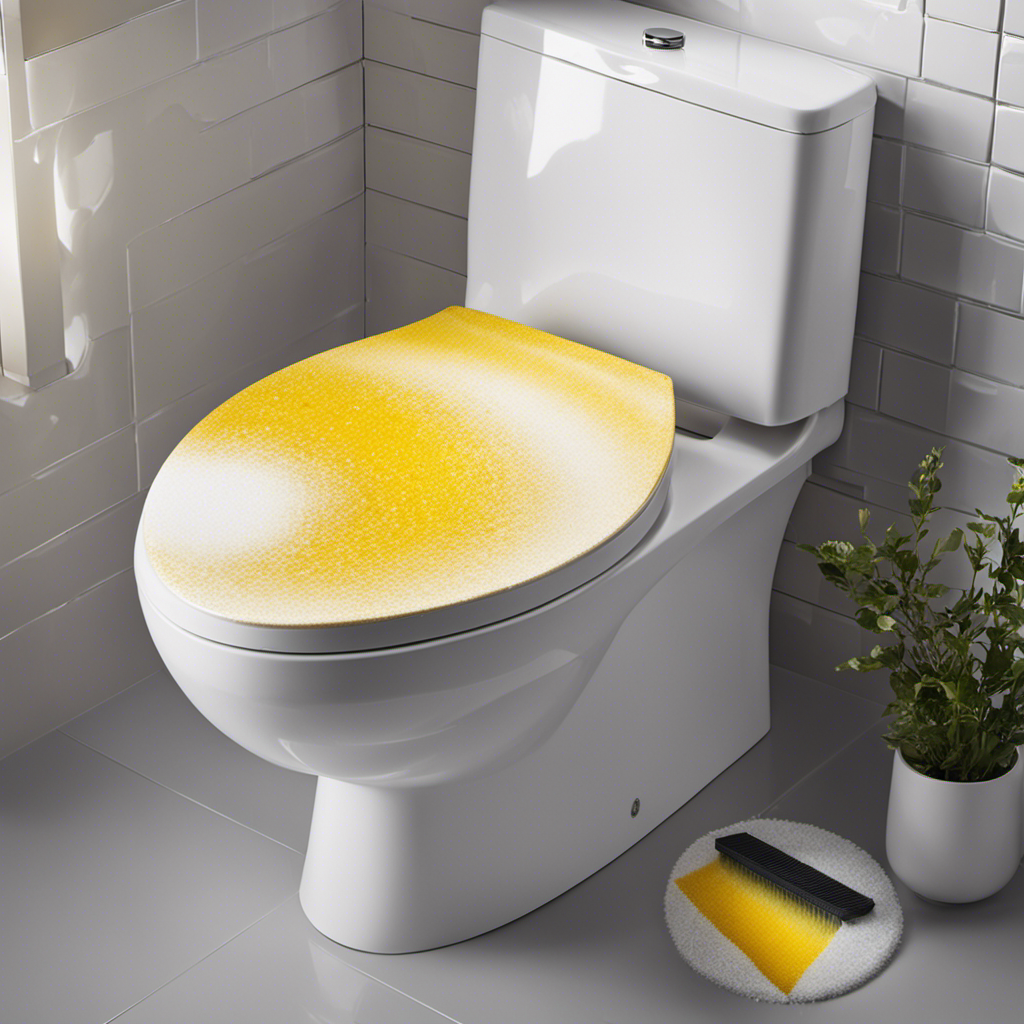So, you’re tired of that annoying toilet that never seems to stop running. Well, fear not, because we’re here to teach you how to replace the toilet float and put an end to your plumbing woes.
In this step-by-step guide, we’ll show you exactly what tools and materials you’ll need, how to prepare the toilet tank for the replacement, and the proper technique for installing the new float.
Say goodbye to that never-ending flow and hello to a well-functioning toilet!
Key Takeaways
- Adjusting the water level in the toilet tank is an important step in maintaining the proper functioning of the toilet.
- The process of replacing a faulty flapper involves turning off the water supply, draining the tank, disconnecting the old flapper, and installing a new one.
- Removing the old float requires locating the float assembly, removing any clips or screws securing it, and inspecting it for damage.
- Installing the new float involves attaching it to the fill valve, reconnecting the water supply line, and checking for leaks.
Tools and Materials Needed
To replace the toilet float, you’ll need a few tools and materials. Float replacement tips and float maintenance techniques can help ensure a smooth process.
Firstly, gather the necessary tools: an adjustable wrench, a screwdriver, and a pair of pliers. These tools will allow you to loosen and remove the old float assembly. Additionally, you’ll need a replacement float assembly, which can be purchased at any hardware store.
Before starting the replacement process, it’s important to turn off the water supply to the toilet. This can be done by shutting off the water valve located near the base of the toilet.
With the tools and materials ready, you can now proceed to prepare the toilet tank for float replacement.
Preparing the Toilet Tank
To ensure proper function of your toilet, it’s important to adjust the water level and replace the flapper when necessary.
Adjusting the water level involves adjusting the fill valve to control the amount of water in the tank, preventing overflow or inadequate flushing.
The flapper replacement process involves removing the old flapper and installing a new one to ensure a tight seal and prevent water leaks.
Water Level Adjustment
The water level can be adjusted by turning the adjustment screw clockwise. If you’re experiencing water level issues in your toilet, troubleshooting the water level is an important step to take before considering float replacement. Here are some tips to help you troubleshoot and adjust the water level:
| Troubleshooting | Solution |
|---|---|
| Water level too low | Turn the adjustment screw clockwise to raise the water level |
| Water level too high | Turn the adjustment screw counterclockwise to lower the water level |
| Inconsistent water level | Check for any leaks or obstructions in the fill valve mechanism |
Flapper Replacement Process
If you’re experiencing issues with the water level in your toilet, troubleshooting the flapper replacement process may be necessary.
Flapper maintenance is crucial for ensuring that your toilet flushes properly and efficiently.
Common float problems, such as a leaking or worn-out flapper, can cause the water level in your toilet to fluctuate or remain too high.
To replace the flapper, start by turning off the water supply valve located behind the toilet.
Flush the toilet to drain the tank, and then remove the old flapper by disconnecting it from the chain and unscrewing any attachment screws.
Once the old flapper is removed, you can proceed to the next step of installing a new flapper, which will be covered in the following section.
Removing the Old Float
First, check if there is a clip securing the float in place before attempting to remove it.
Float replacement is a crucial task in toilet maintenance to ensure proper water level control.
To begin the process, locate the float assembly, which is usually attached to the fill valve.
Look for a small clip or screw securing the float in place. Use a pair of pliers or a screwdriver to carefully remove the clip or screw.
Once the float is free, gently lift it out of the water tank. Be cautious not to damage any surrounding components.
Inspect the float for any signs of damage or wear, such as cracks or leaks.
If necessary, replace the float with a new one to ensure optimum performance and prevent water wastage.
Installing the New Float
Once you’ve removed the old float, it’s time to install the new one. Float maintenance is an essential part of toilet upkeep, ensuring proper water levels and preventing leaks.
To install the new float, begin by attaching it to the fill valve in the toilet tank. Make sure it is securely fastened and positioned correctly.
Next, reconnect the water supply line to the fill valve. Tighten the nut with a wrench to ensure a watertight seal.
Once everything is secure, turn on the water supply and let the tank fill. Check for any leaks around the float and the connection points. If you notice any issues, double-check the installation and tighten any loose connections.
Following these troubleshooting tips will help ensure a successful installation of your new float.
Adjusting the Float Level
To ensure proper functionality of your toilet, it is crucial to maintain the correct water level. This can be achieved by adjusting the float level.
In this discussion, we will explore the techniques for adjusting the float, ensuring that it is set at the optimal height. Additionally, we will address common troubleshooting issues related to float adjustment, providing you with the knowledge to tackle any problems that may arise.
Proper Water Level
Make sure you adjust the toilet float to maintain the proper water level. The water level in your toilet tank is crucial for its efficient functioning.
Here are three important points to consider when it comes to maintaining the proper water level:
-
Water level adjustment: The water level should be adjusted so that it is about 1 inch below the top of the overflow tube. This ensures that there is enough water for a proper flush without overflowing the tank.
-
Troubleshooting common issues: If you notice that the water level is too high or too low, it could indicate an issue with the float mechanism. Check if the float is properly attached and not obstructed. If necessary, adjust the float arm or replace the float altogether.
-
Proper water level benefits: Maintaining the correct water level prevents water wastage, reduces the risk of overflowing, and ensures efficient flushing. It also helps to prevent damage to the toilet and prolong its lifespan.
Float Adjustment Techniques
When adjusting the float in your toilet tank, you’ll want to ensure it is properly attached and functioning correctly. Float maintenance is crucial for maintaining the water level in the tank and preventing any overflow issues.
If you notice that the float is not working as it should, it may be time for a float replacement. To replace the float, start by turning off the water supply to the toilet. Then, unscrew the old float from the fill valve and replace it with a new one.
Make sure the new float is securely attached and adjust it to the desired water level. Finally, turn the water supply back on and test the float to ensure everything is working properly.
Regular float maintenance is essential to keep your toilet functioning efficiently and prevent any potential water damage.
Troubleshooting Common Issues
If you’re experiencing a constantly running toilet, one possible cause could be a faulty float. A malfunctioning float can prevent the fill valve from shutting off properly, leading to water continuously flowing into the toilet tank.
To troubleshoot this issue and ensure a smooth operation, follow these steps:
-
Inspect the float: Check if the float is damaged or stuck in the up position. A damaged float may need to be replaced.
-
Adjust the float height: Ensure that the float is set at the correct height to allow the fill valve to shut off when the tank is full. This can be done by bending the float arm or adjusting the float screw.
-
Check the fill valve: If the float seems fine, the issue might be with the fill valve itself. Clean or replace the fill valve if necessary.
Testing and Troubleshooting
To test and troubleshoot, start by checking the water level in the toilet tank. This is an essential step in identifying any issues with the toilet float. If the water level is too high, it could mean that the float is not working properly and needs to be replaced.
Another way to test is by flushing the toilet and observing how the float responds. If it does not rise and stop the water flow, it is likely that the float is faulty.
You can also manually lift the float and see if it stops the water flow. If it doesn’t, it is a clear indication that the float needs to be replaced.
These troubleshooting techniques will help you identify and resolve any issues with your toilet float efficiently.
Conclusion
To conclude, replacing a toilet float is a relatively simple task that can be done with just a few tools and materials.
By following the steps outlined in this article, you can ensure that your toilet functions properly and efficiently.
Did you know that a leaking toilet can waste up to 200 gallons of water per day? By replacing a faulty float, you can prevent unnecessary water wastage and save on your water bill.
So don’t hesitate to tackle this DIY project and enjoy the benefits of a well-functioning toilet.










